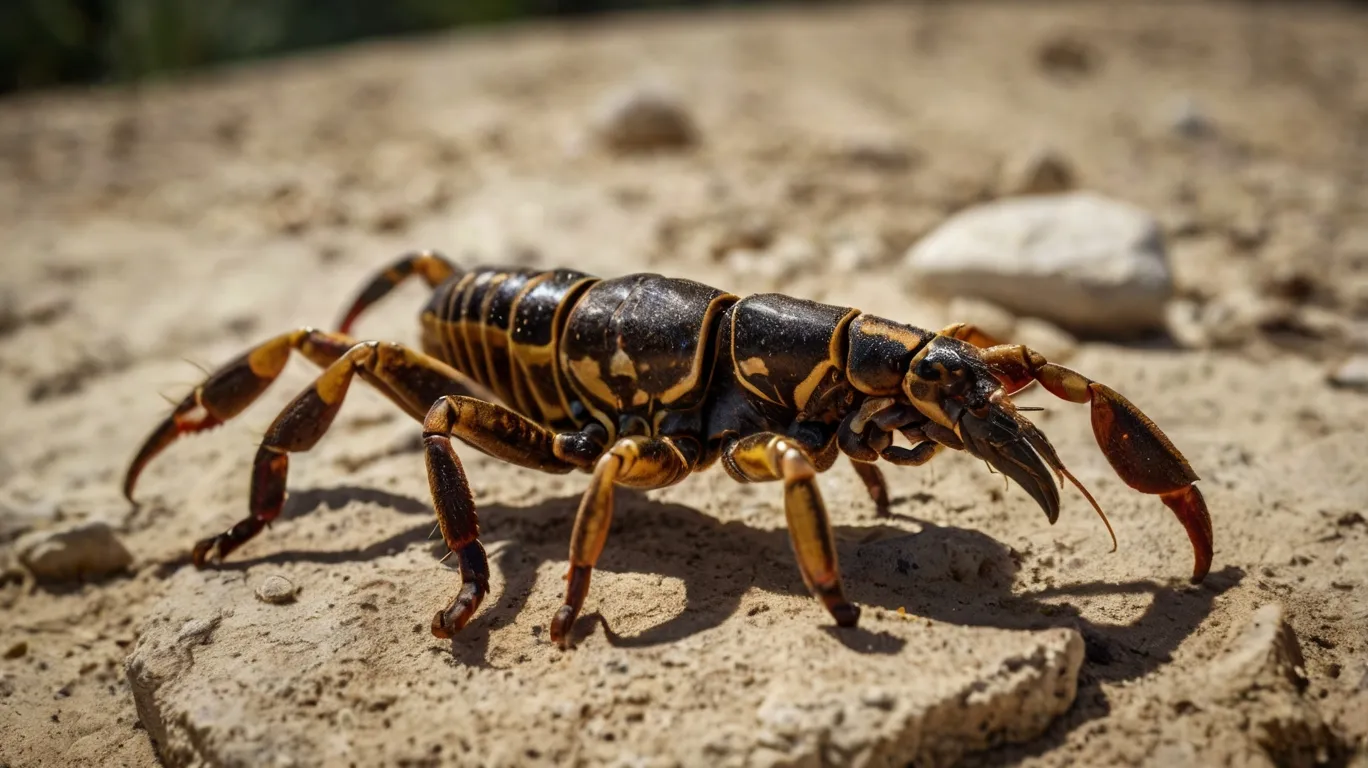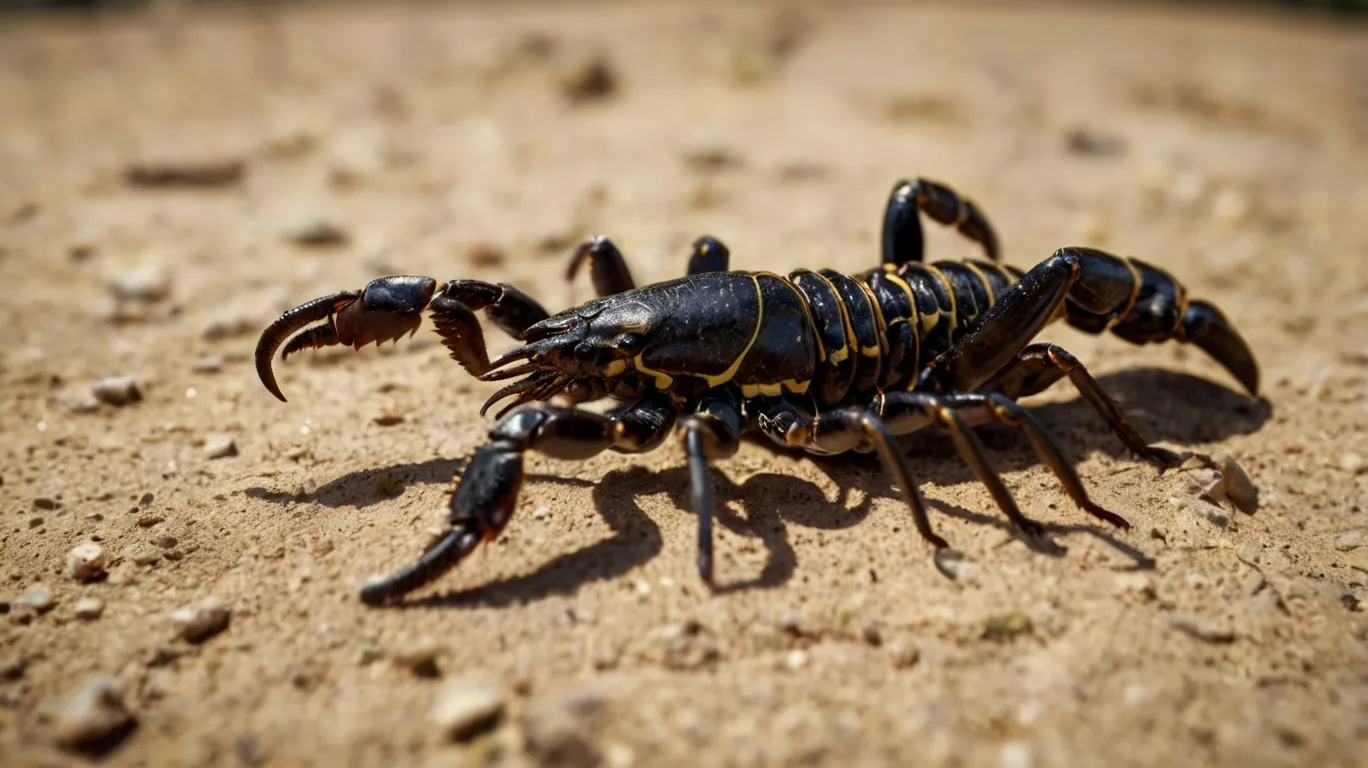Scorpion Medical Information & Health Guide
Understanding Scorpion Health
Scorpions, like tarantulas, are generally robust invertebrates when their specific environmental needs are met. Issues typically arise from incorrect husbandry (temperature, humidity), molting problems, dehydration, or physical injury. Veterinary care is extremely rare and often impractical. Prevention through meticulous husbandry and recognizing subtle signs of trouble are the keeper’s primary responsibilities. This guide provides general information based on common scorpion keeping practices and known issues; it is NOT a replacement for highly specialized veterinary advice (if available) or guidance from expert invertebrate keepers.

Common Scorpion Health & Molting Issues
Being aware of potential problems is crucial for scorpion care.
- Dysecdysis (Bad Molt / Mismolt): Difficulty shedding the exoskeleton, a critical and vulnerable process. Often caused by incorrect humidity (too low or sometimes too high/wet), dehydration, stress, or potentially underlying issues.
- Symptoms: Scorpion stuck in the old skin, unable to free legs, tail (metasoma), or pincers (chelae); deformed body parts after molting; death due to entrapment.
- Prevention: Maintain species-specific humidity levels (critical during pre-molt/molt), ensure constant access to a shallow water dish, minimize disturbances when molting is suspected (scorpion may become reclusive, less active).
- Intervention (Very Risky): If clearly stuck for many hours (>12-24h), some experienced keepers *might* attempt minimal aid using a damp Q-tip to moisten the stuck area. This is extremely risky and can easily injure or kill the scorpion. Non-intervention is often safer.
- Dehydration: Insufficient water intake or environmental humidity. Common in arid species if water isn’t provided, or humid species if humidity drops too low.
- Symptoms: Lethargy, wrinkled appearance (especially intersegmental membranes), unresponsiveness, may appear thinner.
- Prevention: Always provide a shallow, clean water dish. Maintain correct humidity for the species (misting one side of enclosure or substrate for humid types, keeping substrate slightly damp).
- Treatment: Ensure water dish is accessible. Gently guide scorpion’s mouthparts towards water. May place in a temporary “ICU” with damp paper towels (avoiding drowning) for contact moisture in severe cases. Prognosis poor if very advanced.
- Mycosis (Fungal Infection): Fungal growth on the exoskeleton, often occurring in overly damp, stagnant conditions with poor ventilation. Can sometimes be secondary to injury.
- Symptoms: Dark spots or patches on the exoskeleton, sometimes progressing to lesions. Can look like black ‘soot’ or discolored areas.
- Prevention: Ensure proper ventilation, avoid waterlogged substrate, maintain correct humidity levels without constant wetness, remove waste promptly.
- Treatment: Difficult. Improve ventilation, allow substrate to dry appropriately between mistings (if applicable). Some keepers try topical antifungal creams sparingly (vet/expert advice needed, highly risky). Isolate affected scorpion. Often progresses despite efforts.
- Parasites (Mites): Small mites can sometimes infest enclosures, usually feeding on waste or mold (scavenger mites). True parasitic mites directly harming the scorpion are rarer but possible.
- Symptoms: Visible tiny moving dots on scorpion or substrate. Scavenger mites gather on waste. Parasitic mites might cluster around joints or soft tissues.
- Prevention: Quarantine new scorpions/substrate, maintain good hygiene (remove waste, uneaten food), use clean substrate sources.
- Treatment: Identify mite type if possible. Thorough enclosure clean-out and substrate change usually manages scavenger mites. Parasitic mites are harder; may involve introducing predatory mites (Hypoaspis miles) or careful application of mite treatments (high risk, expert/vet consultation advised).
- Injury: Falls (less common than heavy tarantulas, but possible), injuries from enclosure items, or damage during molting. Tail (metasoma) damage can be serious.
- Symptoms: Visible wounds, hemolymph (clear/bluish fluid) leakage, damaged/broken tail or limbs.
- Prevention: Secure lid, avoid excessively tall enclosures for heavy species, remove sharp objects, careful handling (if necessary).
- Treatment: For minor hemolymph leaks, applying cornstarch can help clotting. Keep scorpion in clean, dry conditions. Monitor closely. Severe injuries, especially to the tail, often have poor outcomes.
- Stress: Caused by improper temperatures, incorrect humidity, too much light, lack of hides, excessive handling, or vibrations.
- Symptoms: Lethargy or frantic pacing, reclusiveness, refusal to eat, increased aggression (defensiveness). Chronic stress weakens the immune system.
- Prevention: Provide accurate husbandry, ample secure hiding places, minimize handling and enclosure disturbances, keep in a low-traffic area.
- Chemical Exposure / Toxicity: Sensitive to pesticides, cleaning chemicals, aerosols used near the enclosure.
- Symptoms: Erratic movements, twitching, paralysis, lethargy, death.
- Prevention: Avoid all chemical use near the enclosure. Ensure feeders are pesticide-free. Use clean substrate.
- Note: Often fatal. If suspected, move immediately to a clean, safe setup and seek expert advice, though prognosis is usually poor.
Husbandry: The Foundation of Scorpion Health
Replicating the scorpion’s natural environment is key to preventing problems.

- Species-Specific Setup: Research the exact species. Desert species need different care than rainforest species (substrate, humidity, temps). Provide appropriate hides (cork bark, rocks, deep substrate for burrowers).
- Correct Substrate: Sand/peat/coco fiber mixes for arid species; peat/coco fiber/soil mixes for humid species. Depth varies – burrowers need several inches.
- Temperature Gradient: Provide a warm side and cool side within the species’ acceptable range. Under-tank heaters (side-mounted better for burrowers) controlled by thermostats are common.
- Appropriate Humidity: Critical factor. Desert species need low humidity but access to water. Tropical species need higher humidity, achieved via substrate moisture and misting (allow drying periods). Good ventilation is vital to prevent stagnation/mold.
- Water Dish: Always provide a shallow, stable water dish.
- Feeding: Offer appropriately sized live prey (crickets, roaches) based on scorpion’s age and species. Remove uneaten prey after 24 hours. Remove waste/boluses regularly.
- Secure Enclosure: Scorpions can be escape artists. Ensure a tight-fitting, secure lid.
- Minimal Handling: Most scorpions should not be handled due to stress and potential stings (venom potency varies greatly by species – KNOW YOUR SPECIES). Use tongs for relocation if needed.
- Quarantine: Isolate new scorpions to monitor for issues (30-60 days).
General Signs of Poor Health in Scorpions
Be vigilant for these indicators:
- Lethargy, lack of responsiveness
- Refusal to eat (outside of pre-molt)
- Wrinkled or shriveled appearance (dehydration)
- Difficulty molting, getting stuck
- Dark spots or patches on exoskeleton (mycosis)
- Visible mites crawling on the scorpion
- Visible injuries or hemolymph leakage
- Erratic movements, twitching (toxicity/neurological issue)
- Tail held limply or abnormally (can indicate injury or severe weakness)
Finding Veterinary or Expert Assistance
Professional help is scarce; experienced hobbyists are key resources.
- Veterinary Care (Extremely Rare): Finding vets experienced with scorpions is highly unlikely for most keepers. Treatment options are very limited even if found.
- Experienced Keeper Network: Online forums (Arachnoboards, scorpion-specific forums), Facebook groups, and invertebrate societies are the best places to seek advice. Experienced keepers can often help diagnose problems based on photos/descriptions and recommend husbandry adjustments.
- Provide Thorough Information: When asking for help, include: scorpion species, age/size (if known), detailed setup info (temp, humidity, substrate, enclosure size), feeding routine, last molt date, clear photos of the scorpion and enclosure, and a description of the problem.